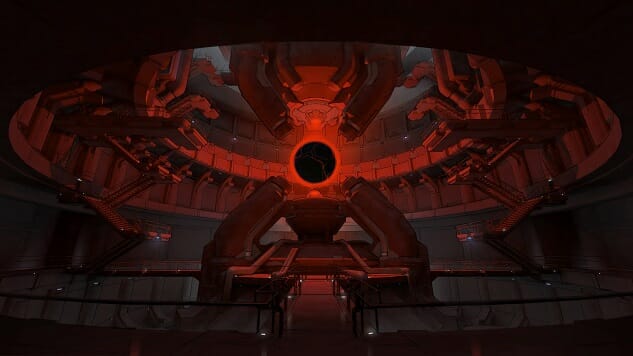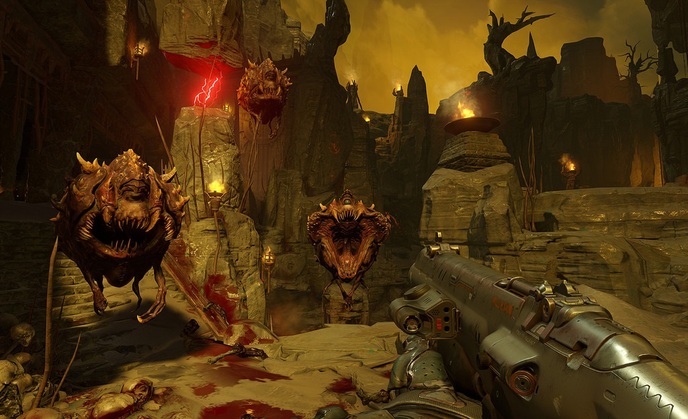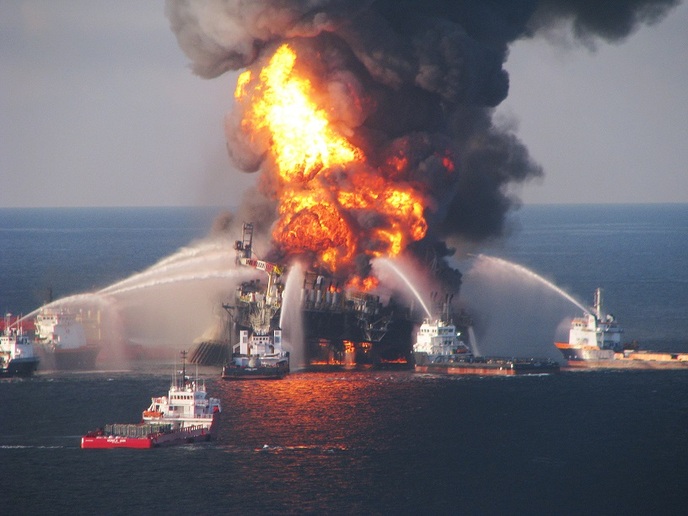DOOM Is About Climate Change
An Inconvenient DOOM
Deepwater Horizon photo by US Coast Guard / Getty Images
“Story in a game is like story in a porn movie; it’s expected to be there, but it’s not that important.”
John Carmack is famously quoted as saying this in the book Masters of Doom, by David Kushner. It’s not dated, specifically, but one can infer it happened in about 1992, about a year before the commercial release of DOOM. The game would revolutionize the shooter genre and be a staple of gaming history for decades to come. 1992 was also the year of the United Nations Conference on Environment and Development, commonly referred to as the Earth Summit.
The Earth Summit is notable for, among other things, ratifying the Climate Change Convention, a multinational agreement built to stabilize greenhouse gas emissions worldwide. The Climate Change Convention also laid the groundwork for the Kyoto Protocol, one of the most direct environmentally-focused global treaties of the 20th century. 1992 was a big year for state and corporate powers to recognize the threats of climate change.
Story, for young developer Carmack, was unimportant. 1993’s DOOM was to be a game of action, shooting and gore. On release, the game became a breakout hit, changing the face of games and the world, but it was hardly a story powerhouse. Levels led to other levels via elevators and boss battles. What little story was there was strung together by combat progression.
Twenty-three years later, a Carmack-less Id Software would develop and release a soft reboot for the DOOM series, 2016’s simply-titled DOOM. 2016’s DOOM, however, had something 1993’s did not: it had story.
Or, to be more precise, it had more of a story. It wasn’t exactly a game chock-full of dialogue or anything like that, but it had a flavor to its characters and world that didn’t exist in the 1993 original. The Doom Slayer was no longer an emotionless avatar for the player—he did things of his own volition. He wrecked things, mostly, but he did it with style. He had a history and personality. When the Doom Slayer was resurrected to quell the demon uprising on a UAC Mars base, he did it, but he made sure to do it by his own rules.
2016’s DOOM put the Doom Slayer in the reluctant employ of Samuel Hayden, the chairman of the Union Aerospace Corporation. The base on Mars within which the majority of the game takes place in is a resource extraction facility, built to pull “Argent Energy” from a portal to Hell opened by the UAC.
As you might expect, the energy demands of the base prove too much, and the energy emanating from the Hell portal begins to corrupt and wither away the workers in the base. Additionally, the portal being open leaves a pathway for demonkind to come onto the surface of Mars as well.
Things fall apart. The UAC’s meager security forces prove too ill-equipped to handle the demon hordes, and human conversion into “husks” leaves many personnel horrifically disfigured and hungry for blood. It’s classic DOOM in that sense: a whole landscape of enemies to shoot and weapons with which to shoot them.
Except this time, Hell wasn’t just a place where demons came from. It had resources. Argent energy, the MacGuffin powering the UAC base and set to eventually be shipped offworld, is a finite resource gathered from Hell. And more importantly, the continued extraction of Argent Energy is causing a massive imbalance in the demonic forces of Mars. Human use of Argent Energy is leeching from the natural cycles of Hell, and enraging the demonic inhabitants.

